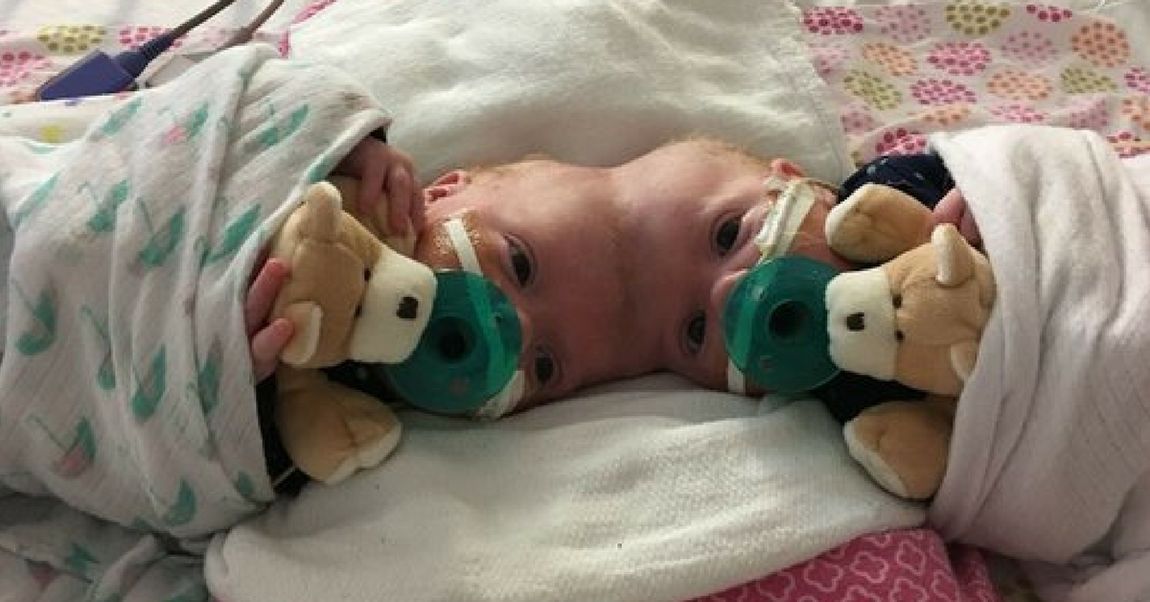Conjoined twins have long fascinated the world, capturing our attention with their unique bond and incredible stories of survival. These remarkable siblings share not only a physical connection but also an unbreakable emotional bond that defies all odds. The story of conjoined twins is more than just a medical phenomenon; it's a testament to the power of human resilience and love.
From ancient times to modern medicine, conjoined twins have been the subject of curiosity, admiration, and scientific study. Their lives often challenge societal norms and inspire millions around the world. As we delve into their stories, we uncover incredible journeys filled with challenges, triumphs, and lessons that resonate deeply with humanity.
In this article, we will explore the fascinating world of conjoined twins, from their biological origins to their personal experiences. Through in-depth research and expert insights, we aim to shed light on their lives, debunk myths, and celebrate their extraordinary contributions to society. Let's embark on this journey together and discover what makes their stories so compelling.
Read also:Where Is Dua Lipa Performing Tonight
Table of Contents
- Biography of Conjoined Twins
- Biological Aspects of Conjoined Twins
- Types of Conjoined Twins
- Medical Advancements in Separation Surgery
- Famous Conjoined Twins
- Psychological Impact on Conjoined Twins
- Cultural Perception of Conjoined Twins
- Ethical Considerations in Handling Conjoined Twins
- Building a Support System for Conjoined Twins
- Future Prospects for Conjoined Twins
Biography of Conjoined Twins
Understanding the Basics
Conjoined twins are identical twins who are physically connected at birth. This rare condition occurs due to incomplete separation of the fertilized egg during early development. The prevalence of conjoined twins is estimated to be around 1 in 200,000 live births globally, making their existence incredibly rare.
Throughout history, conjoined twins have been documented in various cultures, often viewed with a mix of awe and superstition. From the legendary Biddenden Maids in England to the famous Chang and Eng Bunker from Thailand, their stories have left an indelible mark on human history.
Below is a table summarizing some key details about conjoined twins:
| Category | Details |
|---|---|
| Prevalence | 1 in 200,000 live births |
| Types | Thoraco-omphalopagus, Craniopagus, Pygopagus, etc. |
| Survival Rate | Varies based on type and medical care |
Biological Aspects of Conjoined Twins
How Conjoined Twins Form
Conjoined twins occur when a single fertilized egg fails to fully separate into two distinct embryos during the early stages of pregnancy. This usually happens between the 13th and 15th day after conception. Depending on the timing and extent of separation, the twins may share certain organs, tissues, or limbs.
Modern medical imaging techniques, such as ultrasound and MRI, have significantly improved the ability to diagnose conjoined twins prenatally. These advancements allow doctors to assess the complexity of the connection and plan appropriate interventions if necessary.
Types of Conjoined Twins
Conjoined twins can be classified based on the location and extent of their connection. Some common types include:
Read also:Whats Elon Musks Sons Name
- Thoraco-omphalopagus: Connected at the chest and abdomen, often sharing the heart and liver.
- Craniopagus: Connected at the head, sharing parts of the brain and skull.
- Pygopagus: Connected at the back, usually sharing the spinal cord and pelvis.
- Parapagus: Side-by-side connection, sometimes with shared organs or limbs.
Medical Advancements in Separation Surgery
The Evolution of Surgical Techniques
Separation surgery for conjoined twins is one of the most complex procedures in modern medicine. It requires a multidisciplinary team of specialists, including surgeons, anesthesiologists, and neonatologists, to ensure the best possible outcome. Advances in imaging technology, surgical tools, and post-operative care have significantly improved success rates over the years.
According to a study published in the Journal of Pediatric Surgery, the success of separation surgeries depends on several factors, including the type of connection, the organs shared, and the overall health of the twins. While some separations result in successful independent lives for both twins, others may lead to complications or even loss of life.
Famous Conjoined Twins
Chang and Eng Bunker: The Original Siamese Twins
Chang and Eng Bunker, born in 1811 in Siam (modern-day Thailand), were among the first conjoined twins to gain worldwide fame. They traveled extensively, performing in circuses and exhibitions, and eventually settled in the United States. Despite their physical connection, they led fulfilling lives, marrying sisters and raising large families.
Today, their legacy lives on through the term "Siamese twins," though the term is no longer widely used due to its outdated nature. Their story serves as a powerful reminder of the resilience and adaptability of conjoined twins.
Psychological Impact on Conjoined Twins
Exploring Emotional Well-being
The psychological well-being of conjoined twins is a crucial aspect of their lives. Living as conjoined twins presents unique challenges, including societal stigma, physical limitations, and emotional pressures. However, many conjoined twins develop strong bonds and supportive relationships that enhance their quality of life.
Research conducted by the American Psychological Association highlights the importance of mental health support for conjoined twins and their families. Counseling, therapy, and peer support groups can play a vital role in helping them navigate the complexities of their lives.
Cultural Perception of Conjoined Twins
From Superstition to Celebration
Cultural perceptions of conjoined twins have evolved over time. In some societies, they were seen as divine beings or omens of good fortune, while in others, they faced discrimination and misunderstanding. Today, conjoined twins are celebrated for their uniqueness and contributions to science and society.
Media portrayals of conjoined twins have also played a significant role in shaping public perception. Movies like "The Sisterhood of the Traveling Pants" and documentaries like "The Twinning Project" have brought their stories to a wider audience, fostering greater understanding and empathy.
Ethical Considerations in Handling Conjoined Twins
Navigating Complex Decisions
The care and treatment of conjoined twins raise important ethical questions. Decisions regarding separation surgery, medical interventions, and quality of life must be made with the best interests of the twins in mind. Ethical guidelines emphasize the importance of respecting their autonomy and dignity, while also considering the wishes of their families.
Organizations like the World Health Organization and the United Nations Children's Fund advocate for policies that prioritize the rights and well-being of conjoined twins, ensuring they receive the support and resources they need to thrive.
Building a Support System for Conjoined Twins
Creating a Community of Care
A strong support system is essential for the physical, emotional, and social development of conjoined twins. Families, healthcare providers, educators, and community members all play a role in creating an environment that fosters growth and independence. Support groups and advocacy organizations provide valuable resources and networks for conjoined twins and their loved ones.
Programs like "Twin to Twin" and "Conjoined Twin Support" offer peer mentoring, educational materials, and financial assistance to those in need. These initiatives help break down barriers and promote inclusivity for conjoined twins worldwide.
Future Prospects for Conjoined Twins
Innovations in Medicine and Technology
The future looks promising for conjoined twins, thanks to advancements in medical science and technology. Researchers are exploring new methods for separation surgery, regenerative medicine, and prosthetic development to improve outcomes for these remarkable individuals.
As society continues to embrace diversity and inclusivity, conjoined twins will have more opportunities to pursue their dreams and make meaningful contributions to the world. Their stories inspire us to celebrate differences, challenge limitations, and embrace the beauty of human connection.
Conclusion
The story of conjoined twins is one of courage, resilience, and love. From their biological origins to their personal journeys, they remind us of the power of human spirit and the importance of acceptance. By understanding their experiences and supporting their needs, we can create a more inclusive and compassionate world for all.
We invite you to share your thoughts and experiences in the comments below. Your feedback helps us improve and expand our coverage of this fascinating topic. Don't forget to explore other articles on our site for more insightful content about human health, science, and culture.


